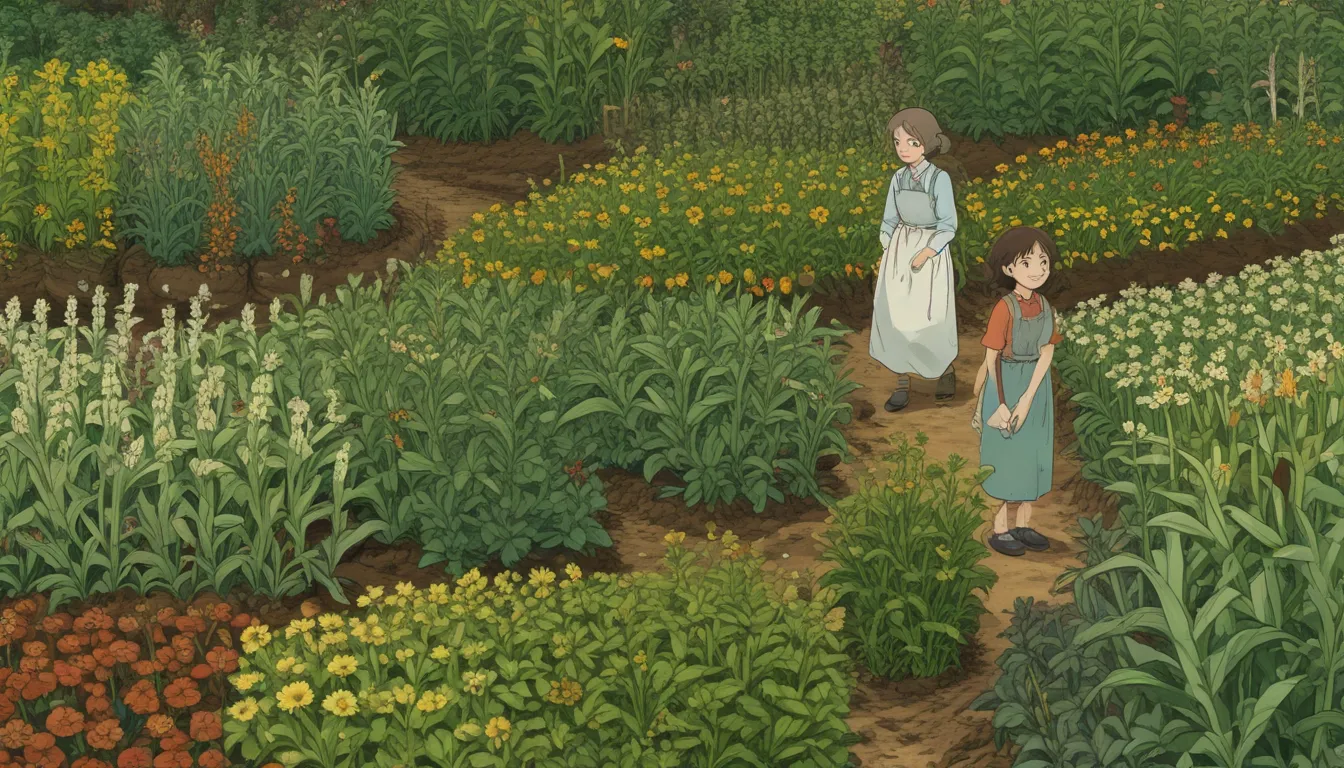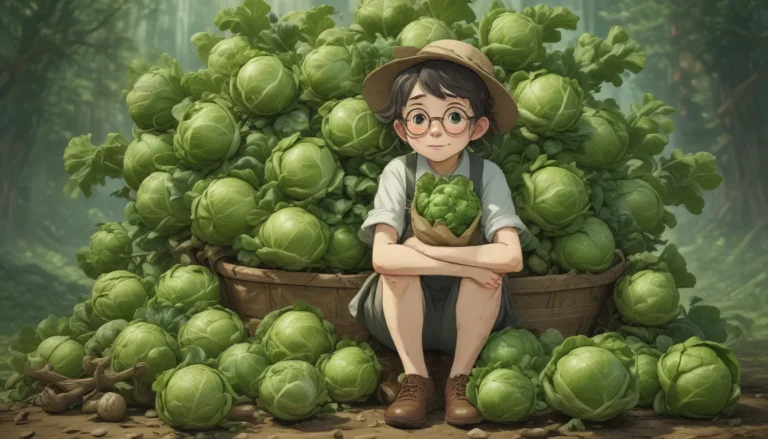A Comprehensive Guide to Companion Planting for Corn

Growing corn in your garden can be a gratifying experience. However, ensuring that your Zea mays crop thrives to its full potential requires more than just planting and watering. Companion planting is an effective strategy that can help your corn grow tall, strong, and healthy. By strategically pairing certain plants with your maize, you can create a harmonious garden that not only looks beautiful but also benefits from enhanced growth and protection against pests.
The Benefits of Companion Planting
Companion planting involves the strategic placement of specific plants together in the garden to achieve mutual benefits. Some of the advantages of companion planting include pest control, pollinator attraction, structural support, and nutrient enhancement. For corn, companion planting offers the opportunity to maximize space utilization and optimize growth conditions. By planting compatible companions, you can create a thriving ecosystem that promotes the health and vitality of your corn crop.
Here’s what you’ll learn in this article:
- The Benefits of Companion Planting
- 9 Companion Plants for Corn
- Basil
- Dill
- Nasturtiums
- Pole Beans
- Potatoes
- Pumpkins
- Radishes
- Sunflowers
- White Clover
- What Not to Plant Near Corn
9 Companion Plants for Corn
When it comes to companion planting for corn, there are several ideal plants that can enhance the growth and resilience of your maize crop. From pest-repelling herbs to nitrogen-fixing legumes, these companion plants offer a range of benefits for your corn.
1. Basil
Basil (Ocimum basilicum) is not only a flavorful herb for culinary purposes but also a valuable companion plant for corn. Basil can help deter pests such as the maize weevil, which can damage corn kernels. By planting basil near your corn patch, you can create a natural barrier against common pests and protect your crop from infestations.
For additional protection, consider harvesting basil leaves and scattering them around the base of each cornstalk. This method can help ward off pests and maintain the health of your maize crop.
2. Dill
Dill (Anethum graveolens) is more than just a pickling herb – it’s also a beneficial companion plant for corn. Dill attracts parasitic wasps and other beneficial insects that can help control pests like aphids, corn earworms, and cutworms. By planting dill near your corn, you can create a pest-resistant environment that supports the overall health of your maize crop.
Make sure to allow dill to flower and attract beneficial insects, helping to maintain a natural balance in your garden.
3. Nasturtiums
Nasturtiums (Tropaeolum majus) serve as a trap crop to divert aphids away from your corn crop. By planting nasturtiums a few feet away from your corn patch, you can attract aphids to these vibrant blooms and protect your maize stalks from infestations. Additionally, combining nasturtiums with dill can create a synergistic effect, attracting parasitic wasps that further control pest populations in your garden.
Nasturtiums are not only beneficial for pest management but also a colorful addition to your garden landscape. Consider incorporating them alongside your corn for added visual interest.
4. Pole Beans
Pole beans (Phaseolus vulgaris) are an essential component of the traditional Three Sisters planting technique. These climbing beans can utilize corn stalks as natural trellises, providing structural support and stability for the maize crop. By planting pole beans near your corn, you can create a symbiotic relationship that benefits both plants and enhances their growth.
Ensure that you train the bean shoots to wind around the corn stalks as they grow, promoting a healthy coexistence between these companion plants.
5. Potatoes
Potatoes (Solanum tuberosum) can serve as green manure for your corn crop, supporting soil health and nutrient retention. Planting corn and potatoes together in alternate rows can help reduce the risk of verticillium wilt in potatoes, a common fungal disease that affects crop yield. By incorporating corn as green manure for potatoes, you can enhance soil fertility and promote healthier potato growth.
Consider sacrificing some corn plants at the end of the season to enrich the soil with organic matter and support the growth of your potato crop.
6. Pumpkins (and Other Cucurbits)
Squash, pumpkins, and other cucurbits are integral components of the Three Sisters planting trio, along with corn and beans. These vining plants act as living mulch for corn and beans, suppressing weeds and conserving soil moisture. By planting cucurbits alongside your corn, you can create a thriving ecosystem that supports the growth of all companion plants.
Allow the cucurbit vines to spread and intermingle with the corn and bean crops, ensuring optimal growing conditions for all plants involved.
7. Radishes
Radishes can help deter corn borers and other pests that may threaten your corn crop. Allowing radishes to bolt and flower can attract beneficial insects that protect your corn from common pests like cucumber beetles and squash borers. By planting radishes near your corn patch, you can create a natural barrier against destructive pests and promote a healthier growing environment for your maize crop.
Consider succession planting radishes to maintain a continuous supply of companion plants throughout the growing season.
8. Sunflowers
Sunflowers (Helianthus annuus) are beneficial companions for corn, attracting beneficial insects like ladybugs that prey on pests. By planting sunflowers near your corn, you can create a habitat for pest-killing predators that safeguard your maize crop. Additionally, sunflowers add visual appeal to your garden landscape and provide tasty seeds that can be harvested at the end of the season.
Choose dwarf sunflower varieties that are suited to your growing zone and plant them strategically alongside your corn for maximum benefit.
9. White Clover
White clover (Trifolium repens) acts as a living mulch for corn, suppressing weeds and enhancing soil fertility. Clover’s nitrogen-fixing abilities make it an ideal companion plant for maize, providing essential nutrients that support corn growth. By planting white clover near your corn patch, you can create a balanced ecosystem that benefits both plants and promotes soil health.
Incorporate white clover as a cover crop or living mulch in your garden to maximize the benefits of companion planting for corn.
What Not to Plant Near Corn
When planning your corn companion planting strategy, it’s essential to consider plants that may not thrive alongside maize. Brassicas like cabbage, broccoli, and kale should be kept at a distance from corn, as they require ample sunlight that corn may overshadow. Additionally, tomatoes should be planted away from corn to avoid attracting similar pests that can affect both crops.
By avoiding incompatible plants and focusing on suitable companions, you can create a harmonious garden ecosystem that supports the growth and vitality of your corn crop.
Cultivating a Thriving Garden Ecosystem
Companion planting offers a holistic approach to garden management, promoting biodiversity, pest control, and nutrient cycling. By strategically pairing companion plants with your maize crop, you can create a thriving ecosystem that benefits all plants involved. Experimenting with different companion plants and observing their interactions can help you optimize your garden layout and maximize the health and productivity of your crops.
Have you tried companion planting with your corn crop? Share your experiences, tips, or questions in the comments below! For more guides on companion planting, be sure to check out our additional resources on garlic, dill, and kale companionship.
In summary, cultivating a successful garden with a diverse range of companion plants can enhance the growth, health, and productivity of your corn crop. By strategically selecting compatible companions and avoiding incompatible plants, you can create a harmonious ecosystem that promotes a thriving garden environment. Experimenting with different companion planting techniques and observing the interactions between plants can help you optimize your garden layout and achieve successful crop yields.





